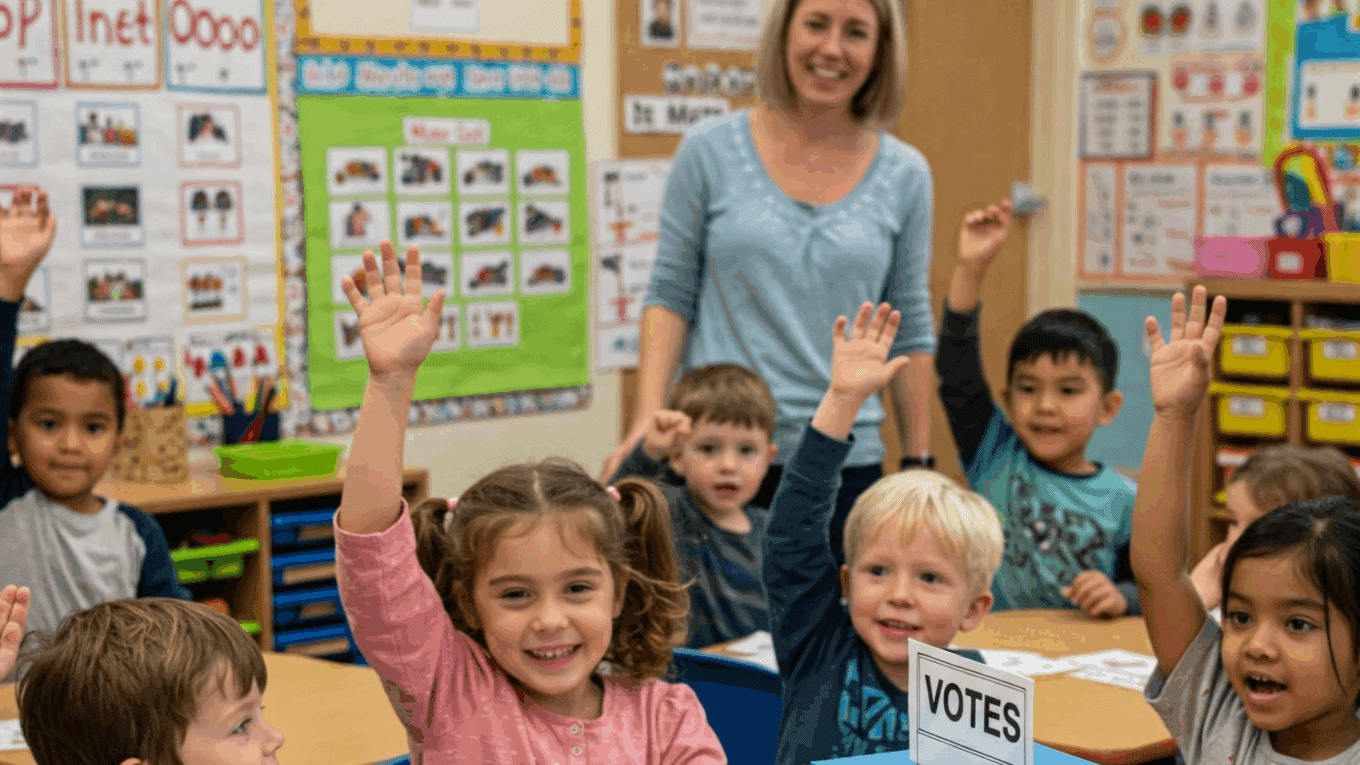Teaching kids about voting starts early! Many teachers notice how small children light up when they get to make choices. This early interest opens a perfect chance to teach them about our voting system.
These voting activities for kindergarten help children learn democracy basics while they play. These simple exercises build decision-making skills and show them how their voice counts.
Ready to turn your classroom into a mini-polling station? The following sections offer easy-to-follow ideas that work in real classrooms.
Introducing Voting to Kindergarteners
Before jumping into voting activities for kindergarten, teachers need a simple plan. These instructions help make the concept clear for young minds who are just starting to understand group decision-making:
- Start with a simple question: Begin with something fun like “Should we read this book or that book today?” Show two clear choices and explain that everyone will help decide.
- Explain what voting means: Tell students voting is how we make choices when many people are involved. Say things like, “Voting helps us find out what most people want to do” using words five-year-olds understand.
- Show how votes work: Use visual aids such as pictures of the choices. Create a chart where kids can see votes adding up. This makes the abstract idea of voting into something they can see.
- Create voting materials: Make simple ballots with pictures for non-readers. You can use colored paper, stickers, or even paper plates
- Set voting rules: Keep rules basic, such as “One vote per person” and “No peeking at friends’ votes.” Practice these rules through role-play before the real vote happens.
- Count together: After everyone votes, count the results as a group. Make it exciting! Say things like “Let’s see which choice got more votes!” and have students help with counting when possible.
By keeping instructions clear and age-appropriate, teachers help young children feel comfortable with the voting process and excited to participate in classroom decisions.
Fun Voting Activities for Kindergarten Classrooms
These simple voting activities for kindergarten help children learn democracy while having fun with friends:
1. Snack Vote

Children vote on which healthy snack the class will enjoy during break time. This real-choice activity gives immediate rewards that help cement the voting concept.
Items needed:
| Item | Quantity |
|---|---|
| Picture cards of snacks | 3-5 options |
| Clear jars | One per snack option |
| Counting tokens | One per student |
Instructions:
- Show the options: Display pictures of available snacks.
- Give tokens: Hand each child one voting token.
- Count results: Tally which jar has the most tokens together.
2. Storybook Election

Students vote for the afternoon story from preselected options. This activity connects literacy with civic education in a meaningful way.
Items needed:
| Item | Quantity |
|---|---|
| Picture books | 2-3 options |
| Voting stickers | One per student |
| Chart paper | One sheet |
Instructions:
- Display books: Show the cover and briefly describe each option.
- Place stickers: Children put their stickers under their choice.
- Read winner: Announce results and read the winning book.
3. Weather Reporter Vote
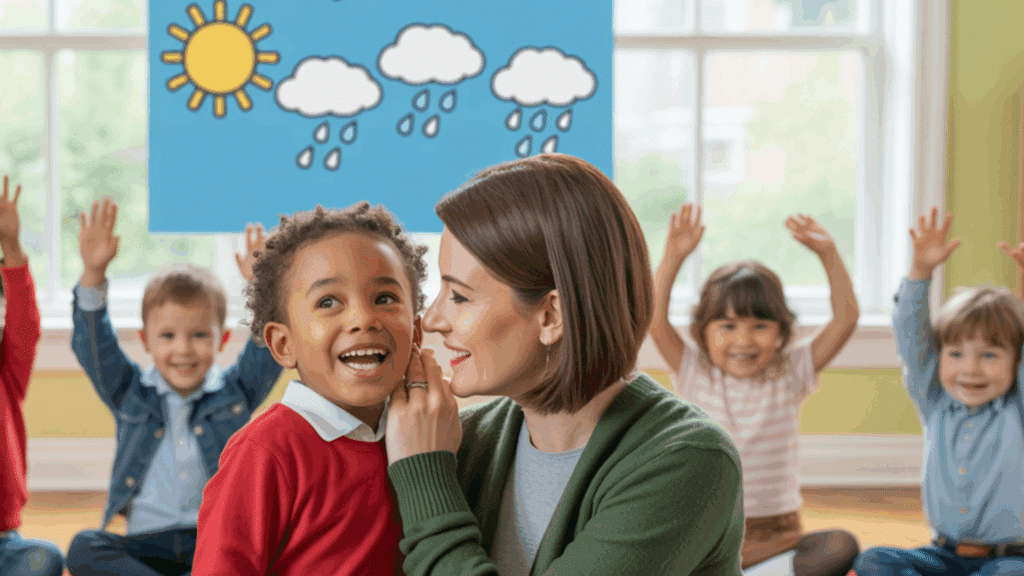
Class votes on which student becomes the daily weather helper. This builds confidence while teaching fair selection methods.
Items needed:
| Item | Quantity |
|---|---|
| Student name cards | One per child |
| Small box | One |
| Weather chart | One |
Instructions:
- Nominate children: Pick 2-3 volunteers each day.
- Secret ballots: Each student whispers their vote to a teacher.
- Announce helper: Count votes aloud and celebrate the new reporter.
4. Classroom Pet Name
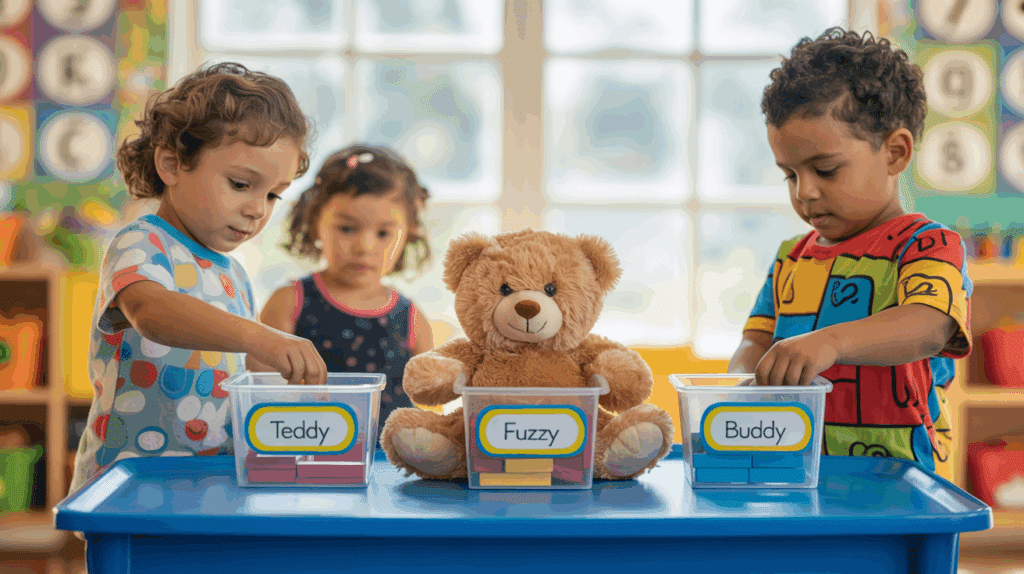
Students vote on naming the class plant or stuffed animal mascot. This creates ownership through a democratic process.
Items needed:
| Item | Quantity |
|---|---|
| Class pet/plant | One |
| Name suggestion cards | 3-4 names |
| Colored blocks | One per student |
Instructions:
- Collect names: Gather suggestions from students first.
- Vote with blocks: Place blocks in labeled containers.
- Ceremony: Hold an official naming ceremony for the winner.
5. Color Day
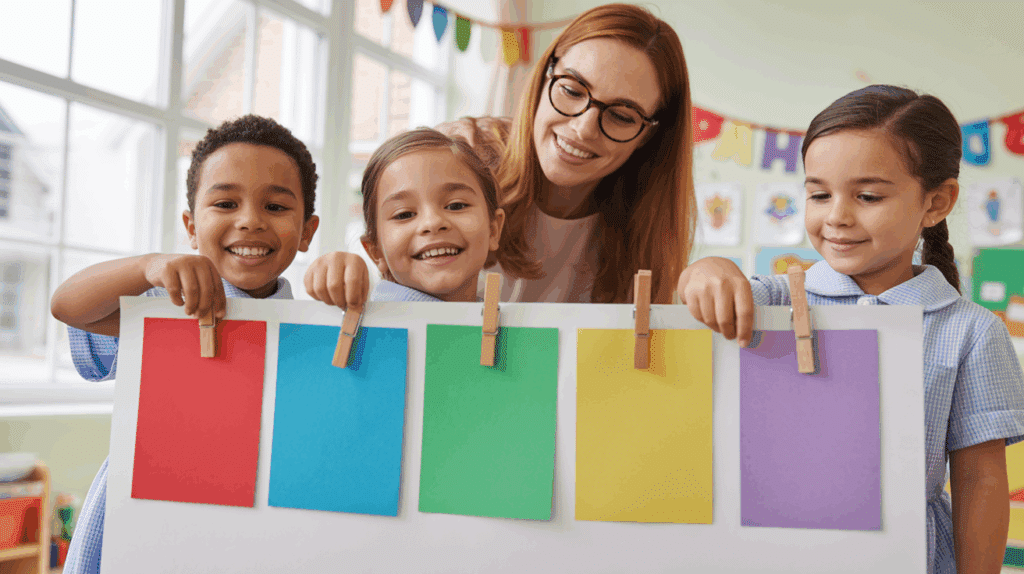
Children vote on which color everyone should wear for a special day. This visual activity creates excitement about voting outcomes.
Items needed:
| Item | Quantity |
|---|---|
| Color cards | 5-6 options |
| Clothespins | One per student |
| Color chart | One |
Instructions:
- Review colors: Talk about each color option first.
- Clip votes: Students place clothespins on their color choice.
- Announce results: Send home notes about the winning color day.
6. Music Choice
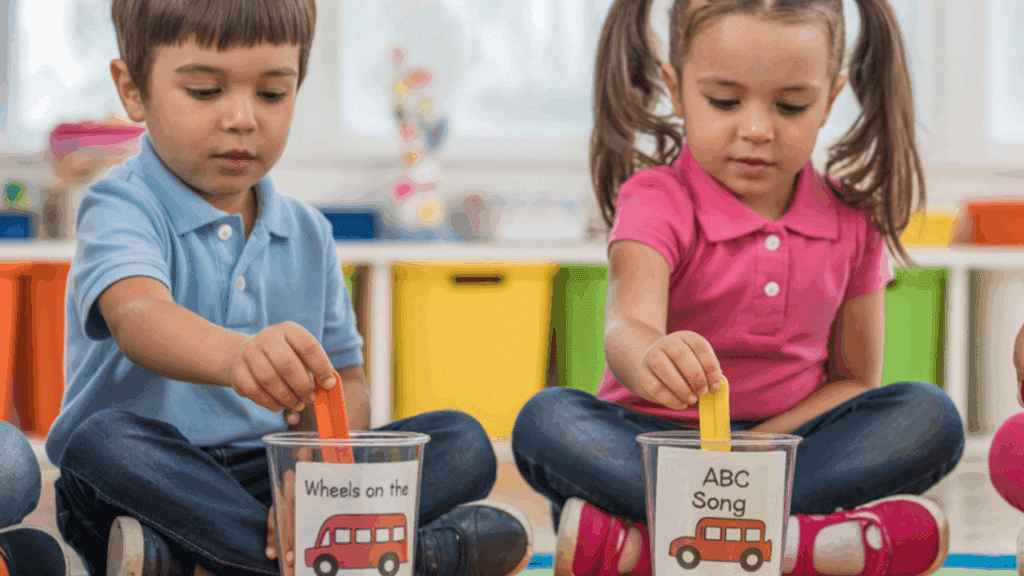
Kids vote on which song to sing during circle time. This activity shows immediate results from their democratic choice.
Items needed:
| Item | Quantity |
|---|---|
| Song picture cards | 3-4 songs |
| Popsicle sticks | One per student |
| Small cups | One per song |
Instructions:
- Review songs: Sing a short part of each option.
- Place votes: Drop sticks in cups for favorite songs.
- Celebrate: Sing the winning song with enthusiasm together.
7. Art Supply Vote
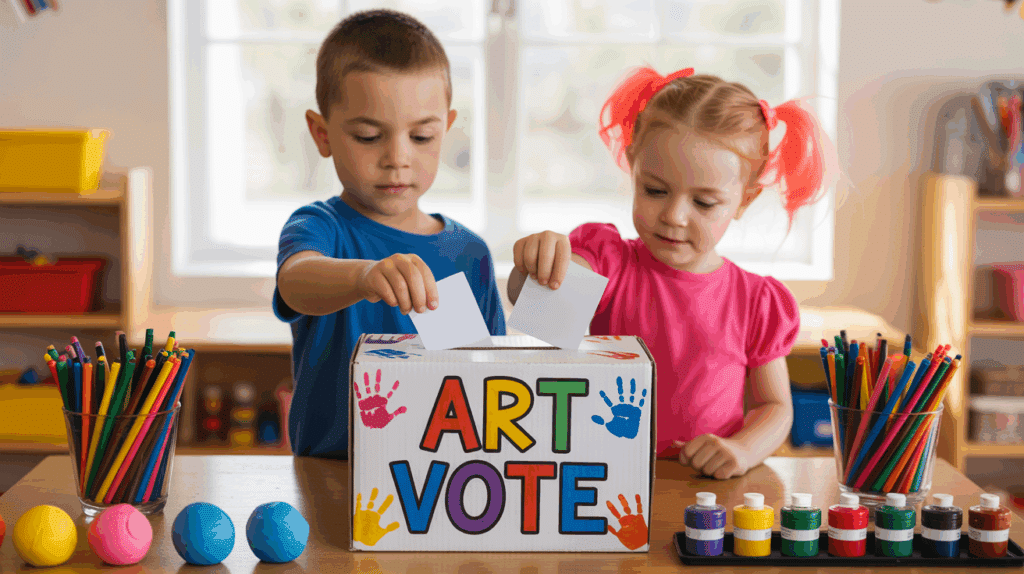
Students decide which new art supply to add to the classroom. This gives purpose to voting with practical outcomes.
Items needed:
| Item | Quantity |
|---|---|
| Supply samples | 2-3 options |
| Paper ballots | One per student |
| Ballot box | One |
Instructions:
- Touch supplies: Let kids feel or test each option.
- Mark ballots: Children circle or stamp their choice.
- Shopping trip: Take helper to “shop” for winning supplies.
These voting activities for kindergarten build important skills while keeping young children engaged in the learning process.
Importance of Voting Activities for Kindergarten Development
Teaching young children about voting goes beyond just fun classroom games. These early lessons build several key skills that help them grow.
- Decision-making skills: Kids learn to think about options and pick what they like best, which helps them make choices in other areas too.
- Social skills: When children vote, they see how their ideas match or differ from friends, helping them understand other viewpoints.
- Math concepts: Counting votes introduces basic math in a real-world way that sticks with kids better than worksheets alone.
- Listening skills: Good activities for kindergarten require children to hear options carefully before choosing, improving focus.
- Fairness understanding: Young students learn that everyone gets one vote, building their sense of equality and fair play.
These simple voting exercises lay the groundwork for future learning. By making these concepts fun now, teachers help create citizens who value their voice later.
Make Voting Activities Fun for Kids
Try these tested tips to keep young voters excited during classroom elections:
Tip 1. Use colorful materials: Bright ballot boxes, stickers, and voting cards catch children’s eyes and build excitement about the process, making voting activities more memorable than standard lessons.
Tip 2. Connect to their interests: When kids vote on things they care about, like which toy to add to the classroom or which song to sing at circle time, they pay more attention to how voting works because the outcome matters to them.
Tip 3. Add movement: Let children place votes by moving to different sides of the room, dropping items in jars, or standing in lines, which helps active learners stay focused through physical participation rather than just raising hands.
Tip 4. Create voting booths: Simple cardboard dividers create “private voting areas” where kids feel grown-up and important, mimicking real-world voting experiences while learning about privacy during elections.
Tip 5. Celebrate the results: No matter which option wins, make the announcement special with a quick classroom cheer or song, teaching kids that the process itself deserves celebration, not just getting their way.
When teachers make voting fun, they grow citizens who look forward to having their say.
Wrapping It Up
Teaching children about democracy starts with small steps in the classroom. These voting activities for kindergarten offer more than just fun – they build skills that last a lifetime.
When young learners cast their first votes, they begin to see how their voice matters. They learn to accept group decisions, even when different from their own choice.
What voting methods have worked in your classroom? Share your experiences in the comments below!
Other teachers (and parents) can learn from your classroom voting success stories.

